Today I followed some students down to the school kitchen, and there were about 20 girls in there learning to make chocolate Christmas cake:
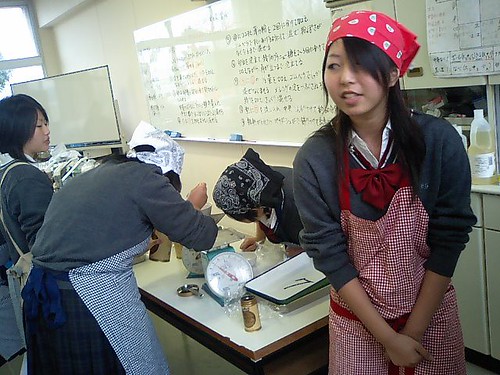
Yukari didn't have a partner, so I was soon drafted to help her out.
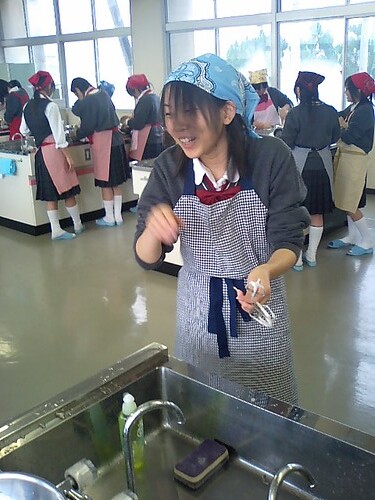 The Ingredients:
The Ingredients: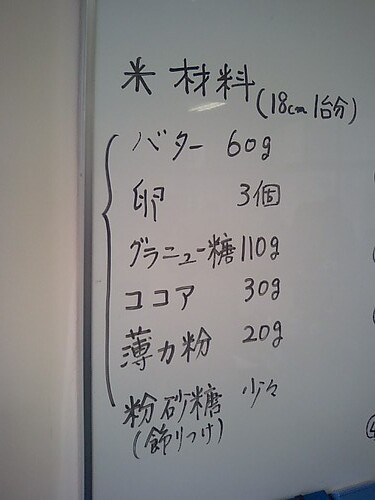
1.5 bars of bitter (Ghana Black by Lotte) chocolate
60 g of butter
3 eggs
110 g of granulated sugar
30 g of cocoa
20 g of powdered sugar
more powdered sugar to taste
FIrst, chop up the
chocolate bars into slivers to make it easy to melt. Start a pot of water boiling to use as a double boiler, and you'll need a large metal bowl in which to melt the chocolate, too.

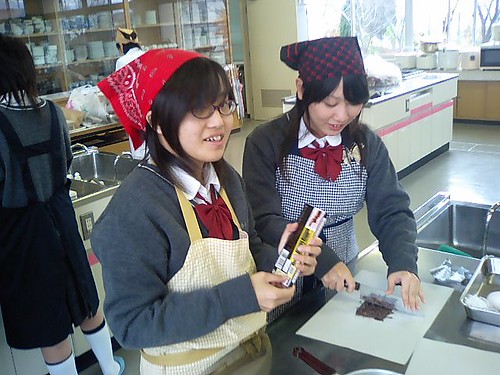
Meanwhile, you'll want to
separate the egg yolks from the egg whites. Put them in two different bowls (you'll need to use an electric mixer or whisk with each eventually). First, mix
half the granulated sugar with the yolks until frothy. The whisk is fine here, but if you have an electric mixer, it'll be easier in the long run.
You'll then want to
melt all the chocolate, stirring all the time. After you have the chocolate melted, stir in the
butter until it melts into the chocolate. After you have the butter mixed in completely, add the
frothy sugar/egg yolk mixture and stir until the whole thing is a uniform lighter brown color. Use a
rubber spatula for this if possible.
Now is probably a good time to
preheat the oven to 170 degrees Celcius (325 - 350 degree F).
Afterward,
sift the cocoa and powdered sugar to get all the lumps out. Sift them together. Then add half to the chocolate mixture, stirring it all in. Add the rest and again stir it all in, using the rubber spatula.
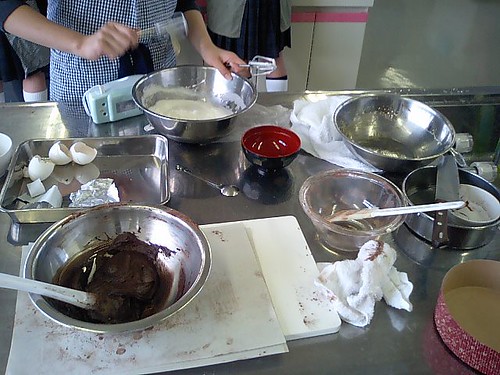
Next, you need to make a
meringue. This sounds hard and all Frenchy and stuff, but it really just means
add sugar to egg whites and whip. Use an electric mixer if at all possible, and gradually add some of the remaining sugar as you mix the egg whites. It should be more like a malleable pseudo-solid than a liquid by the end (think shaving cream, or cool whip), so just keep mixing.
You COULD use a whisk instead of the mixer for the meringue, but that's a nightmare. It'll take a long time, either way. Longer than it seems like it should, anyway. (At least, I thought so).

After you have a suitable meringue,
take 1/3 and stir it into your chocolate mixture with the rubber spatula. When the color is uniform,
stir in the rest of the meringue.

When you have finished mixing everything together and it's all the same color and consistency, you'll need a baking mold. Ours were cardboard (which surprised me) with a diameter about the length of my hand, wrist to middle fingertip (so... 8 inches? probably 20cm). The cake batter filled 1/3 of the mold. Spread it to cover the bottom and so it has a consistent depth.
Bake for 50 minutes. 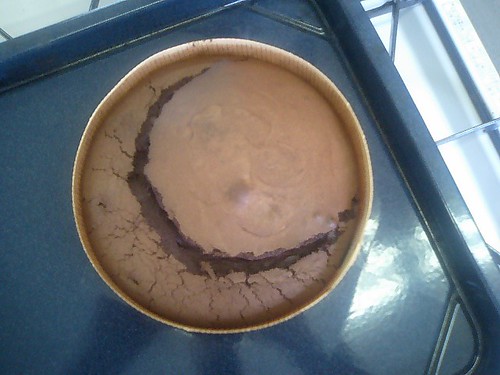
Use stencils and the rest of the powdered sugar to decorate...
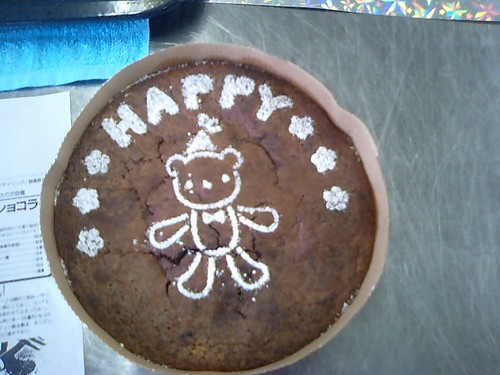

Merry Japanese Christmas!
ラベル: cake, Christmas, cooking, school












